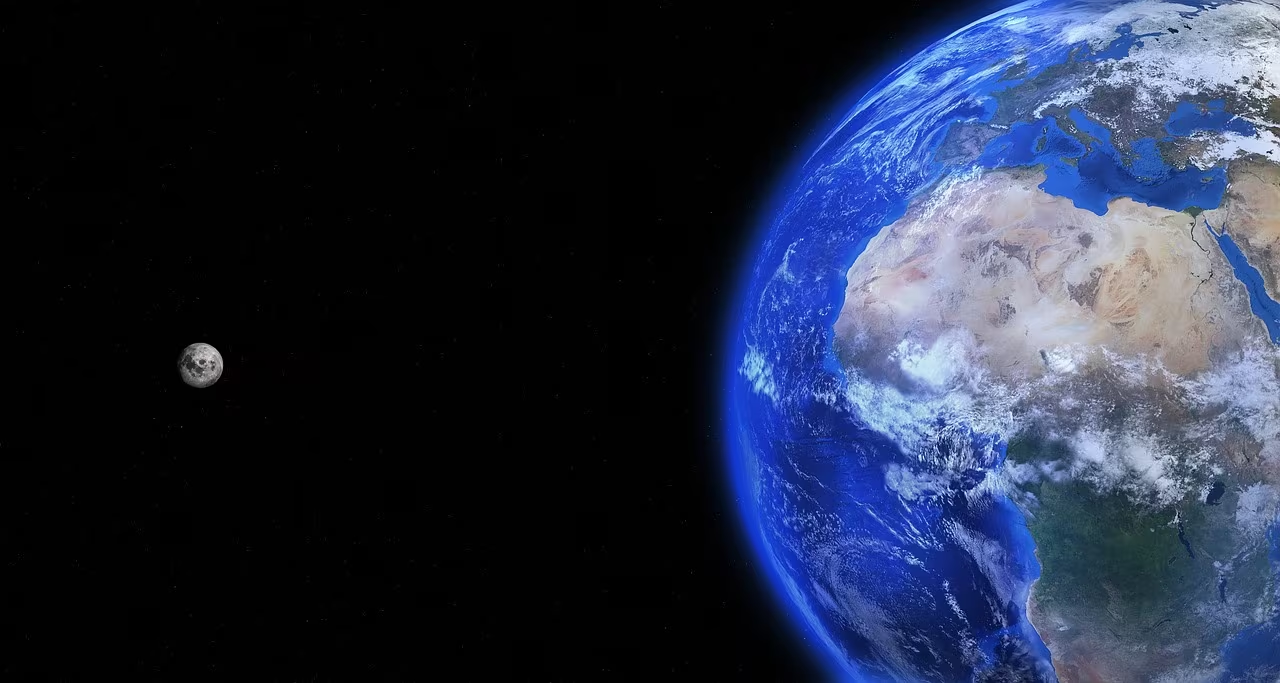New Discovery Near the Third Confirmed Interstellar Visitor
Astronomers have announced the detection of a previously unknown object traveling through our solar system, positioned in the space between Earth and the Comet 3I/Atlas. The discovery adds a layer of complexity to the study of this unique celestial body, which has garnered significant attention due to its unusual trajectory and classification as an interstellar object.
The presence of this new entity—whose size and composition are currently under investigation—near the third confirmed visitor from outside our solar system has immediately prompted further observation by global astronomical teams. This event underscores the dynamic nature of the space environment surrounding Earth, particularly when non-native objects enter our orbital neighborhood.

Contextualizing the ‘Potentially Hostile Threat’ of 3I/Atlas
The original reporting surrounding 3I/Atlas often uses sensational language, describing it as a ‘potentially hostile alien threat.’ In astronomical terms, this description refers not to a malicious intent, but to the object’s origin and trajectory, which are fundamentally different from objects native to our solar system.
What Makes 3I/Atlas Unique?
- Interstellar Origin (3I): The designation ‘3I’ confirms it as the third confirmed interstellar object, following 1I/Oumuamua (discovered in 2017) and 2I/Borisov (discovered in 2019). These objects are not gravitationally bound to the Sun and are merely passing through.
- Unbound Trajectory: Unlike planets or native comets, 3I/Atlas is traveling on a hyperbolic path, meaning it will eventually leave the Sun’s gravitational influence and return to deep space, making its trajectory unpredictable compared to known solar system bodies.
- Cometary Activity: While classified as an interstellar object, its cometary nature (the ‘C’ designation in its full name) means it exhibits a coma—a cloud of gas and dust—as it approaches the Sun, making its exact path slightly harder to model precisely.
While the term ‘hostile’ is used for dramatic effect, the actual risk posed by 3I/Atlas is calculated based on its closest approach distance (perihelion). The object is not on a collision course with Earth, but its presence and the newly discovered companion object warrant continuous monitoring.
The New Object: Location and Initial Analysis
The newly found object is currently situated in the vast expanse between the interstellar comet and our planet. Astronomers are racing to determine its exact relationship with 3I/Atlas. Several possibilities are being explored based on preliminary data:
Potential Explanations for the New Object
- A Fragment of 3I/Atlas: The most likely scenario is that the object is a piece of debris that broke off the main comet nucleus. Interstellar comets, having traveled vast distances and potentially undergone multiple close stellar passes, can be structurally fragile.
- A Co-Orbital Companion: Less likely, but possible, is that the object is a small asteroid or moon that was gravitationally captured by 3I/Atlas in its distant past and is traveling alongside it.
- A Coincidence: The object could be an entirely unrelated, previously uncataloged asteroid or small solar system body that happens to be in the same line of sight or orbital plane as the comet, but this is less probable given the specific proximity.
Detailed spectroscopic analysis is now crucial to determine if the object shares the same chemical signature as 3I/Atlas, which would confirm a shared origin. The discovery highlights the powerful capabilities of modern deep-sky surveys, which are increasingly sensitive to small, fast-moving objects.

The Importance of Tracking Interstellar Objects
The study of interstellar objects like 3I/Atlas and its newly discovered companion offers invaluable insights into the composition of planetary systems far beyond our own. Since these objects are ejected from their home stars, they provide astronomers with pristine samples of material that formed in other stellar nurseries.
Understanding their structure, stability, and fragmentation patterns is critical for several reasons:
- Planetary Formation Data: They offer clues about the chemical makeup and physical processes occurring in exoplanetary systems, providing a direct comparison to our own solar system’s formation history.
- Orbital Dynamics: Tracking their paths helps refine models of galactic dynamics and the frequency of interstellar object passage through star systems.
- Risk Assessment: While the immediate threat is low, cataloging and understanding the population of interstellar objects is essential for long-term planetary defense planning, as these objects move at extremely high velocities.
Astronomers are currently utilizing powerful facilities, including the Vera C. Rubin Observatory (once fully operational) and existing large-aperture telescopes, to gather precise astrometric data on the new object. This data will be used to calculate its orbital elements and predict its future path relative to Earth.
Key Takeaways
The discovery of a companion object near the interstellar Comet 3I/Atlas is a significant development in deep-space observation. Here are the essential facts readers need to know:
- The Discovery: A new, unidentified celestial object has been found traveling between the interstellar Comet 3I/Atlas and Earth.
- 3I/Atlas Status: It is the third confirmed object originating from outside our solar system, traveling on an unbound, hyperbolic trajectory.
- ‘Hostile Threat’ Defined: The term refers to its non-native, unpredictable trajectory, not an imminent collision or danger.
- Current Hypothesis: The new object is most likely a fragment or piece of debris that recently separated from the main 3I/Atlas nucleus.
- Next Steps: Astronomers are prioritizing spectroscopic analysis to determine the object’s composition and precise orbital path.
Conclusion: A Window into Other Star Systems
While the sensational headlines focus on the ‘threat,’ the real story lies in the scientific opportunity. The presence of a companion object near 3I/Atlas provides a unique chance to study the physical processes—such as fragmentation and outgassing—that affect interstellar material as it passes through a star system. The data collected from this pair will contribute significantly to our understanding of how matter is exchanged between star systems across the Milky Way galaxy, offering a rare, direct look at the building blocks of other worlds.
Original author: Britt Jones
Originally published: November 8, 2025
Editorial note: Our team reviewed and enhanced this coverage with AI-assisted tools and human editing to add helpful context while preserving verified facts and quotations from the original source.
We encourage you to consult the publisher above for the complete report and to reach out if you spot inaccuracies or compliance concerns.

